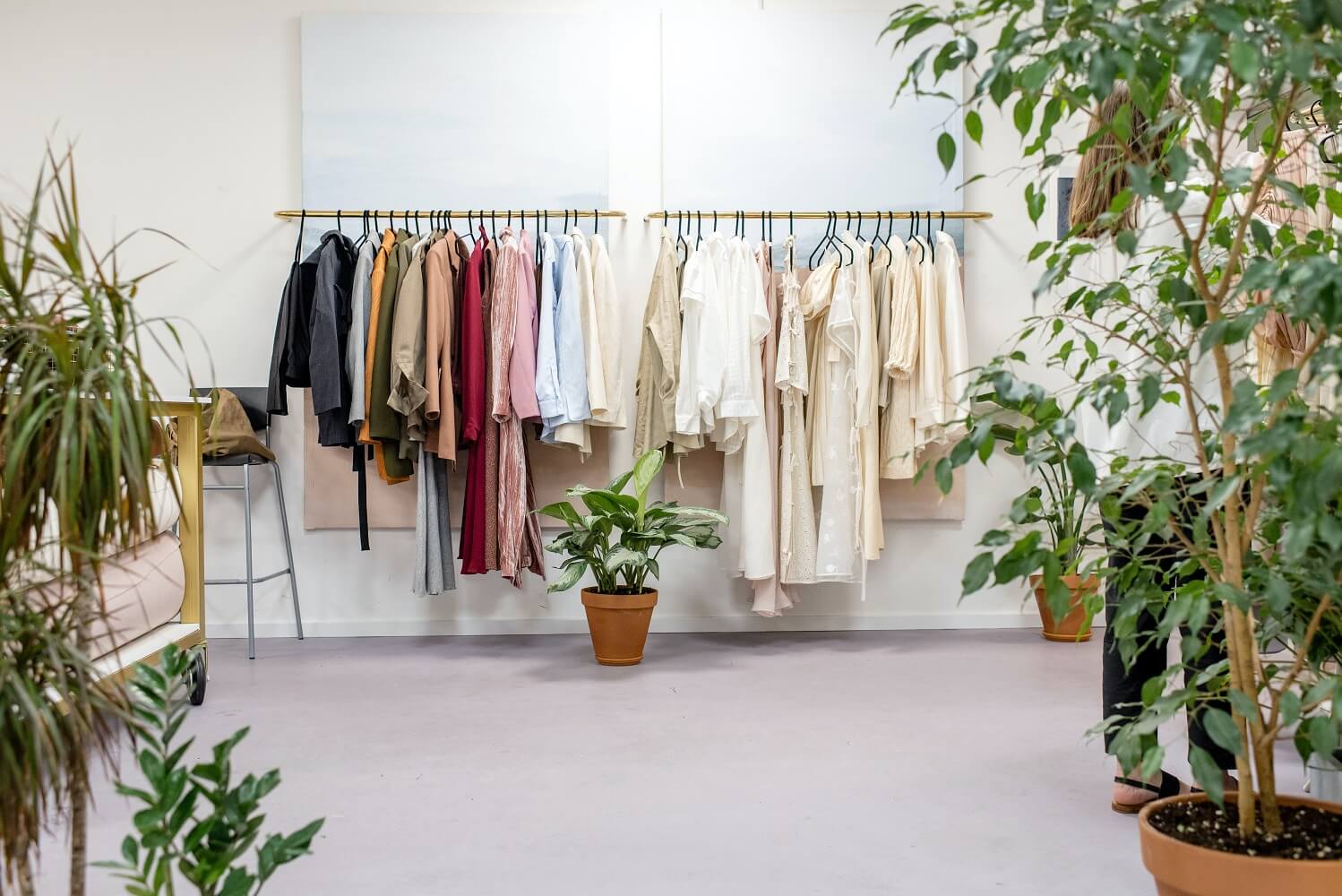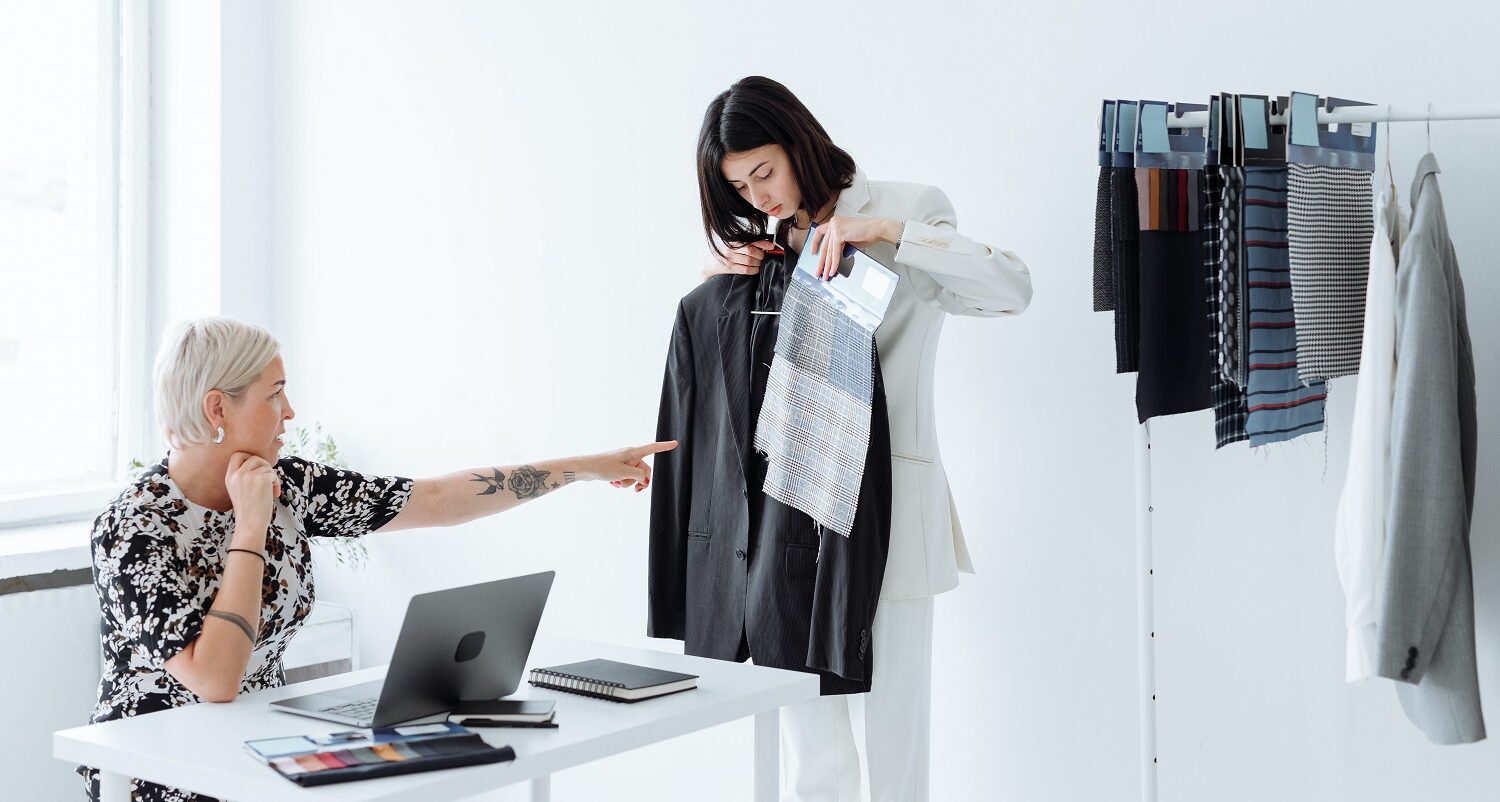“As a clothing manufacturing company, Hongyu Apparel has assisted more than 3,000 customers starting a clothing brand worldwide. We have seen many brands flourish and continue to contact us for re-ordering. We have also seen clothing brands manufacturing inventory and unable to sell. In our manufacturing business, success is obviously the clothing brand owners constantly reordering inventory and launching more clothing designs, so to some extent, our success is closely related to the success of the clothing brand owners.
Have you ever thought of starting your own clothing line? Maybe you have some brilliant ideas in your mind, but how can you turn them into reality? If you are ready to start your brand, please continue reading!
We have summarized some key points based on our experience to inspire our customers how to successfully run or start their clothing business. This is a 11-step guide on how to start a clothing line.”
Starting A Clothing Brand
1. Identify your target market and audience.
“Many people have left their mark in the fashion industry with their collections. Although there is always more room in the market, you need to think about who your customers are and what they need. What vacancy do you want to fill for them? What makes you different? If similar works already exist in large numbers, it is difficult for you to stand out in an oversaturated category.
Always pay attention to the products launched by other successful clothing brands, and write down what they may be missing or what you think can be done better. Do you think there is a lack of attractive swimwear for all body types? Or maybe sexy, eco-friendly underwear doesn’t exist? Is it a T-shirt that can be worn on formal occasions? Is it a hoodie series that can flatter someone’s curve? If you find that you have been longing for something that you can’t find anywhere, then there is a good chance that others are also looking for it!
Not to be confused with determining your market, determining your target audience means considering the type of people you want to set up a clothing line for. For example, if you are creating a lingerie collection, your customers are likely to be women. If you want to design a streetwear collection, your clients are likely to consist of young to middle-aged clients.
Determining your target audience is of great help to the design of the product. How much does your customer spend on clothing? For example, can your customers in their 20s afford a swimsuit studded with crystals? In order to look good, is it worth the cost, or should you reduce it to a notch and make it a lower-cost design?”
2. Research fashion trends or needs and find your clothing niche
“Fashion research Fashion trends are constantly changing. A savvy clothing entrepreneur knows what the current trends are and is able to create a clothing line that meets the needs of the customer. Research fashion trends through trade journals and magazines, such as Women’s Wear Daily and JCK, which cover current fashion trends and styles in jewelry, respectively
In order to bring your innovative new clothing line to retail stores, you need to do some research and understand how fashion trends and clothing construction works. Find a niche or style that no one else has found yet.
Everyone has a unique style. However, there are certain brands of clothing that are considered high-end or trendy. According to market research studies, certain items of clothing have been consistently developed with up-and-coming trends in mind. Because women’s clothing tends to change every season, there is always room for new styles and designs.”
3. Choosing a Clothing Line Business Model
“I’m going to talk about how your business model affects the way you market your clothing line.
There are three main ways to market a clothing line: through brick and mortar stores, online stores, and wholesale. Let’s break these down.
For brick and mortar stores, you’re usually selling through individual boutiques, either directly or through a distributor. When marketing to brick and mortar, it’s important to have a streamlined process for sending out lookbooks and product information so that owners can get an idea of what your collection is and what level of service you offer. You should be prepared for these owners to ask for samples (which should be readily available), as well as information about pricing structures, delivery times, and minimum order quantities.
Online stores are usually selling directly to consumers rather than small retailers, but sometimes they do both with different models. When marketing to online stores, you can use social media (Facebook groups are very popular), email marketing lists (make sure you’ve got permission before sending anything!), and networking at conferences like the National Retail Federation trade show in January. The key here is building relationships with people who want your products—if they’re boutique owners or big-time fashion bloggers looking for new brands to feature on their sites!”
4. Create a Business Plan: logo, budget, time
“Starting a business and making it a success is no easy feat. This is why it’s important to have a business plan in place before you even begin working on your startup. A business plan, at its most basic, is a guide map for your business, that helps you identify where you want to go and how you plan to get there.
By creating a business plan before you dive into the day-to-day work of your business, you’ll be able to work more efficiently, stay focused, and make sure that you’re moving toward an achievable goal.
Here’s what to include in your business plan:
1 Logo: Choose a logo that represents your brand or company. This can be done by hiring a graphic designer or by using an online logo maker. Logojoy is a great option for creating a logo that’s professional and affordable.
2 Budget: Before you start spending money on anything related to your business, you should create a budget for yourself that lays out exactly how much money you have available for this venture, what will be spent on what items, and how much money will be invested in future phases of your business (such as marketing).
3 Time: It’s important that you set aside time every week to”
5. Design Your Fashion Collection
“Designing a clothing collection is hard work.
It’s a long process that involves everything from sourcing to distribution. It takes a lot of time and dedication, and even then, it might not be successful.
But if you’re determined to break into the competitive fashion industry and make your mark on the world, there is no reason to give up. And if you want to be taken seriously as a designer, you’ll need to create a clothing collection that shows who you are as an artist and what you can bring to the world of fashion.”
6. Find a clothing manufacturer to Take Care of Production
“You may be a fashion designer, or you might have your own brand. You’re looking to scale up and own the world, but that means finding someone who will help you make your designs a reality.
Not only will they bring your designs to life, they’ll also handle the entire manufacturing process. This includes sourcing the materials and creating the design prototypes and patterns. They will also deal with everything from cutting the fabric to sewing it together, right down to the finishing details like embroidery and buttons.
Finding a clothing manufacturer to take care of production can be a challenging task. There are some things to keep in mind and some questions that you need to ask before choosing your manufacturer.
Some of the questions you should ask are:
How long have they been in business?
Are they able to help with producing samples?
Can they handle large quantities?
What type of products do they specialize in?
What is the price range of their products?
Hongyu, your trustable clothing manufacturer, and handbag manufacturer!”
7. building your online store
“The first thing to do when building your online store is to decide on a platform.
Some of the most successful sites use Shopify as their platform, but it’s also worth looking into Magento, Squarespace, and WordPress.
Your next decision is going to be whether or not you want to hire someone to create your site. If you choose this route, your next step is to write out several job posts that clearly outline the requirements for the position. It’s also important to include a detailed description of the aesthetic you want for your site. If you choose not to hire someone, it’s time to brush up on your web design skills and start building!
Next, it’s time to add products to your store. This is obviously an ongoing process, but you should have at least a dozen products ready for purchase when you launch the site. You’ll also need to include a detailed product description for each item and make sure that the format for each product’s page is consistent across all pages on the site.
Finally, be sure that your site has clear navigation options and an intuitive checkout process so that people can easily find what they’re looking for and complete transactions without getting frustrated or confused!”
8. Open your brand account on all social media
“Though social media has been around for over a decade, it’s still a relatively new marketing platform and many businesses do not know how to use it. Here are some basic tips to get you started on the right foot:
1. Open your brand account on all social media
We recommend that you sign up for TikTok, Facebook, Twitter, Instagram, and YouTube. These are the most important platforms right now; if you want to expand beyond these networks down the road, you can always create more accounts later.
2. Start using your brand account right away
Don’t wait until you have a perfect content calendar before posting anything! Your brand account will be useless if you don’t begin using it immediately. Don’t worry about having any followers or being popular—just get in there and start posting!
3. Try different types of content
There are many types of content on social media—not just text-based posts! Think about adding images, videos, links to other sites, polls, questions, and more. You might even try going live from time to time! Try out each type of content over the course of a month or so until you find what works best for your audience.”
9. Develop a marketing plan for your apparel business
“Marketing is a crucial component of any business strategy. It helps you attract new customers and convince them to buy your product or service instead of a competitor’s.
In the apparel industry, competition can be fierce. There are clothing brands that have been around for centuries, and there are also hundreds of up-and-coming startups every year. As an apparel brand — whether you’re selling socks or dresses — you need to make sure that your marketing is on point so you can stand out and connect with your target customer.
With the right approach, you can make waves and build a loyal following while generating some real revenue along the way. So how do you get started?
First, you want to ask yourself: what makes my brand unique? How are my products different than the next guy’s? What is the story I can tell that will make people believe in me? When you can answer these questions, you’ll start to see a narrative that will help guide your future marketing efforts (and maybe even give you some ideas for new products).”
10. Open a retail store, launch a pop-up, or sell at markets
“Now that your clothes are being manufactured, the next step is to start selling them!
Sales channels are divided into online and offline sales.
In addition to online sales channels, you can also conduct face-to-face sales in a variety of more affordable and non-promising ways:
Sublet retail space to host a temporary pop-up store
Mini pop-up experience on shelves or in some retail spaces
Apply for booths in the crafts, fashion and designer markets
Vendor booths for music festivals and other events
These are some other channels for selling products
1. Contact the retailer to display your product
2. Open your own physical store
3. Open an online store
4. Peer-to-peer marketing
5. Advertise on search engines such as Google and Bing
6. Advertise on social networks, Facebook, Instagram
7. Write a blog”
11. Looking for more investment or partners to raise funds to build new products
“Start a soft enablement, and then look for more investments and cooperative partner. Once you have a certification of concept-clothes you can market in limited quantities,that you are ready to attract potential cooperative partners and co-investors. It would be great to own your business totally and reserve all your future profits.
But as most enterprise owners begin to enlarge, they need to get funding.Partnering with a business partner who can provide capital in exchange for a share of future revenue is the most traditional way.
Now, once you sell the first designs in quantity, the chance of success increases to more than 60%. Then you need to reinvest profits in your business and expand your customer base.
At this point you may get a good investment from investors, because many venture capital companies are eagerly looking for successful apparel entrepreneur.”
Leave a comment

2022 How to Starting a Clothing Brand :11 Steps Guide
As a clothing manufacturing company, Hongyu Apparel has assisted more than 3,000 customers starting a clothing brand worldwide.

Find Ethical Clothing Manufacturer
Hongyu Apparel has been focusing on ethical clothing manufacturing since its establishment, striving to make the workplace cleaner, safer, and more professional…

2022 Happy New Year – Hongyu Apparel
Hongyu ApparelClothing Manufacturer Merry Christmas & Happy New Year Start Now

How to Find Custom Clothing Manufacturer for Startups
How to Find a Clothing Manufacturer for Startups? My years of experience in clothing manufacturers have found…
